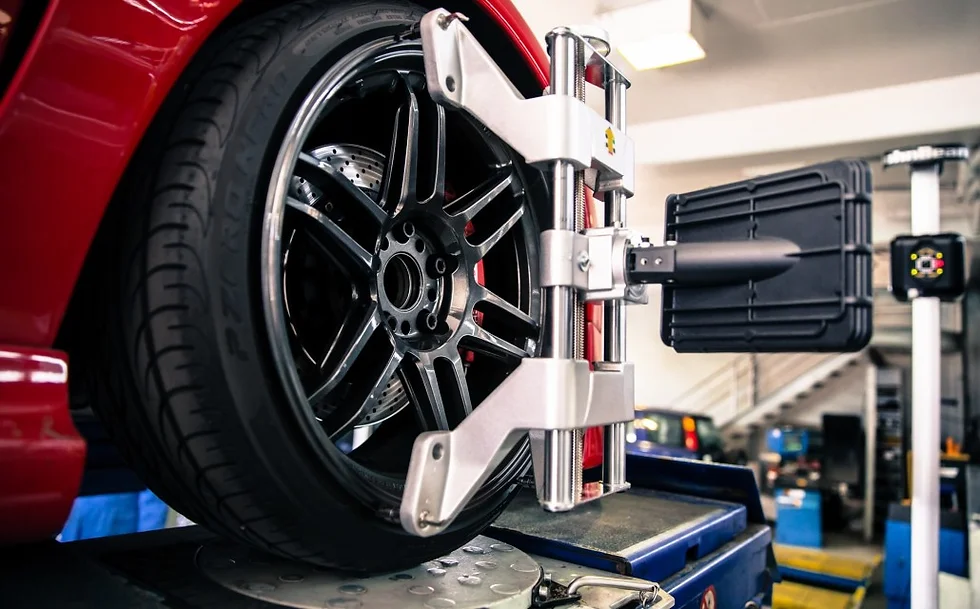In the automotive industry, wheel balancers play a critical role in ensuring the smooth operation of vehicles by evenly distributing the weight of the tires and wheels. Understanding the different components of wheel balancers and their functions is essential for maintaining vehicle performance and safety. This guide provides an in-depth look at the Wheel Balancer Parts, their roles, and why they are important for both automotive professionals and enthusiasts.
Main Components of Wheel Balancers Parts
The Balancer Shaft
The balancer shaft is the central component of the wheel balancer. It is responsible for holding the wheel assembly in place while the machine determines the imbalance. Made from high-strength materials, the balancer shaft must withstand the significant forces applied during the balancing process. Its precision and durability are crucial for accurate balance readings.
Wheel Adapters and Cones
Wheel adapters and cones are used to secure the wheel to the balancer shaft. These components come in various sizes to accommodate different wheel diameters and types. The correct use of wheel adapters and cones ensures that the wheel is properly centered and securely attached, which is vital for obtaining precise balancing results.
Measuring Heads and Sensors
Measuring heads and sensors are the heart of the balancing system. They detect the imbalance in the wheel assembly by measuring the distribution of weight around the circumference of the wheel. Advanced sensors can provide highly accurate readings, allowing for more precise corrections. These components often include infrared sensors or laser technology to enhance measurement accuracy.
Display Panel and User Interface
The display panel and user interface are where the technician interacts with the wheel balancer. This part of the machine shows the imbalance data and guides the user through the balancing process. Modern wheel balancers feature digital displays with touchscreens, providing intuitive controls and easy-to-read information.
Calibration Weight Pockets
Calibration weight pockets are used to hold the calibration weights that are applied to the wheel to correct imbalances. These pockets are strategically placed to ensure that the added weights counteract the detected imbalance, thereby achieving a balanced wheel assembly. Properly designed weight pockets are essential for the effective application of correction weights.
Types of Wheel Balancers
Static Wheel Balancers
Static wheel balancers are the simplest type of wheel balancers, measuring only vertical imbalances. These machines are generally used for smaller wheels and are less complex than dynamic balancers. They are suitable for applications where precise dynamic balancing is not required.
Dynamic Wheel Balancers
Dynamic wheel balancers measure both vertical and horizontal imbalances, providing a more comprehensive balancing solution. These machines are capable of detecting and correcting lateral imbalances, which is crucial for high-speed driving and overall vehicle stability. Dynamic balancers are more advanced and are widely used in professional automotive shops.
Road Force Balancers
Road force balancers simulate the forces exerted on a wheel when it is in contact with the road. By applying a load to the wheel and measuring the resulting force variations, these balancers can detect issues such as lateral runout and tire stiffness variations. This type of balancer provides the most thorough analysis and is ideal for high-performance vehicles.
Maintenance and Calibration of Wheel Balancers
Regular Maintenance
To ensure accurate and reliable performance, wheel balancers require regular maintenance. This includes cleaning the machine, inspecting and replacing worn parts, and ensuring that the sensors and measuring heads are functioning correctly. Regular maintenance helps prevent downtime and extends the lifespan of the equipment.
Calibration Procedures
Calibration is a critical aspect of maintaining the accuracy of wheel balancers. Over time, the sensors and other components can drift, leading to inaccurate readings. Regular calibration using certified weights and following the manufacturer’s guidelines ensures that the balancer provides precise measurements. Proper calibration is essential for maintaining the integrity of the balancing process.
Advancements in Wheel Balancer Technology
Automated Balancing Systems
Modern automated balancing systems incorporate advanced technologies such as robotic arms and AI-driven algorithms to enhance the precision and efficiency of the balancing process. These systems can automatically position the wheel, apply correction weights, and even suggest optimal placement for weights, reducing the need for manual intervention and improving consistency.
Laser and Infrared Technology
The use of laser and infrared technology in wheel balancers has significantly improved the accuracy of imbalance detection. These technologies provide precise measurements of wheel dimensions and weight distribution, allowing for more accurate and efficient balancing. The integration of these advanced technologies has revolutionized the wheel balancing process.
User-Friendly Interfaces
The latest wheel balancers feature user-friendly interfaces with high-resolution touchscreens and intuitive software. These interfaces guide technicians through the balancing process with clear instructions and real-time feedback, making it easier to achieve accurate results. Enhanced data visualization tools also help users understand the imbalance and the required corrections.
